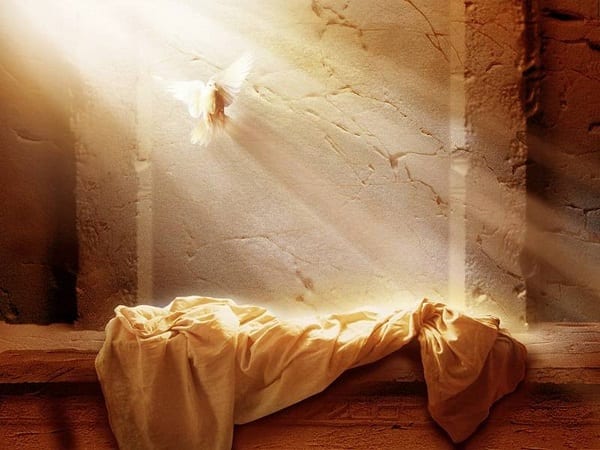
The Resurrection of our Lord Jesus Christ
The story of the Resurrection of Christ is a real human experience; it is not a fairy tale where everyone suddenly lives happily ever after. Beginning with the original disciples of Christ, the story of Christ’s Resurrection lives on in the hearts and minds of Christians even today.
Who were the first doubters of the Resurrection of Christ?
The faith of the disciples was drastically put to the test by their Master’s Passion and Death on the Cross. The shock which the disciples experienced was so great that at least some of the disciples did not at once believe in the news of the Resurrection of Christ. The Gospels tell us that the disciples were downcast (demoralized) (cf. Luke 24:17) and afraid (cf. Jn 20:19). The disciples did not believe the news brought by the women returning from the tomb (cf. Mark 16:11-13), regarding it as “nonsense” (cf. Luke 24:11) After Jesus revealed Himself to the Eleven on Easter evening, “He rebuked them for their unbelief and hardness of heart because they had not believed those who saw Him after He had been raised.” (Mark 16:14) (cf. CCC 643)
Even when the risen Lord appeared to His disciples, they remained doubtful – “they were startled and terrified and thought that they were seeing a ghost.” (Luke 24:37) The Gospel of John relates the story of Thomas, who was not with the other disciples when Jesus appeared to them; it was only when he saw, that he believed. (cf. John 20:24-29) Therefore, the hypothesis that the story of the Resurrection was only a product of the apostles’ faith (or credulity) does not hold. On the contrary, their faith in the Resurrection was born, under the action of divine grace, from their direct experience of the reality of the risen Christ. (cf. CCC 644)
What do we know about the resurrected body of Jesus?
- The risen Christ is not a ghost: He was touched by Thomas (cf. John 20:27-28) and He ate (cf. Luke 24:42-43).
- The resurrected body of Jesus is the same body but in a glorious state: Jesus showed His disciples the marks on His body – the same body that had been tortured and crucified, for it still bears the traces of his Passion. (cf. Luke 24:39-40; Jn 20:20,27) Yet at the same time, the same resurrected body of Christ possessed new properties of a glorious body, which the disciples did not recognize at first (cf. John 20:14; 21:4), and it is not limited by space and time but able to be present however and whenever He wills (cf. John 20:19, 26). (cf. CCC 645)
- Jesus, in His resurrected body, is in heaven as the Second Person of the Holy Trinity: God the Father’s power “raised up” Christ His Son and by doing so perfectly introduced His Son’s humanity, including His body, into the Trinity. (cf. CCC 648)
The Meaning and Significance of the Resurrection of Christ
- The Resurrection of Christ gives definitive proof of His divine authority and confirms all His works and teachings. (cf. CCC 651)
- The Resurrection of Christ is the fulfillment of the promises both of the Old Testament and of Jesus Himself during His earthly life (cf. Luke 24:6-7, 26-27, 44-48). The phrase “in accordance with the Scriptures” in the Nicene Creed indicates that Christ’s Resurrection fulfilled these prophecies. (cf. CCC 652)
- The Resurrection of Christ confirms Jesus’ divinity. Jesus said: “When you lift up the Son of Man, then you will realize that I AM, and that I do nothing on my own, but I say only what the Father taught me.” (John 8:28) (cf. CCC 653)
- The Resurrection of Christ opens for us the way to a new life. This new life is above all justification that reinstates us in God’s grace, “so that as Christ was raised from the dead by the glory of the Father, we too might live in the newness of life.” (Romans 6:4) Justification consists in both victory over the death caused by sin and a new participation in grace. It brings about filial adoption so that men become Christ’s brothers and sisters, as Jesus himself called His disciples after His Resurrection: “Go and tell my brothers.” (Matthew 28:10; cf. John 20:17) We are brothers, not by nature, but by the gift of grace, because that adoptive filiation gains us a real share in the life of the only Son, which was fully revealed in His Resurrection. (cf. CCC 654)
- The Resurrection of Christ is the principle and source of our future resurrection: “Christ has been raised from the dead, the first fruits of those who have fallen asleep. . . For as in Adam all die, so also in Christ shall all be made alive.” (1 Cor 15:20-22) The risen Christ lives in the hearts of His faithful while they await that fulfillment; their lives are swept up by Christ into the heart of divine life, so that they may “live no longer for themselves but for Him who for their sake died and was raised.” (2Cor 5:15) (cf. CCC 655)